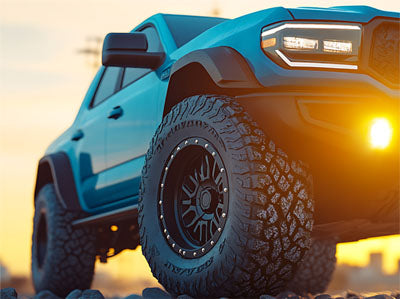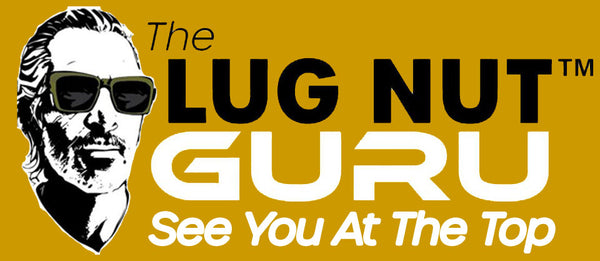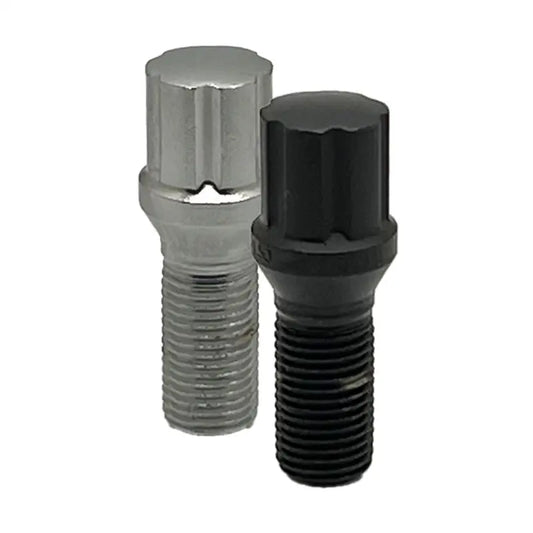
Are Wheel Spacers Safe? Everything You Need to Know
Wheel spacers and adapters are popular among car enthusiasts looking to enhance their vehicle's stance or achieve the perfect fitment. But the question remains: Are wheel spacers safe? Some drivers swear by them, while others worry about potential safety risks. In this article, we’ll explore what wheel spacers are, why people use them, and most importantly, whether they’re safe for your vehicle.
What Are Wheel Spacers and Why Do People Use Them?
Wheel spacers are devices placed between the wheel hub and the wheel itself. Commonly you will also hear these spacers referred to as wheel adapters. Their primary purpose is to push the wheels outward, adjusting the offset for a more aggressive and flush look with the fender. This adjustment is particularly useful when aftermarket wheels don’t provide the desired fitment or when upgrading to larger brakes that require more clearance.
Many car enthusiasts use wheel spacers (adapters) to dial in the exact stance they’re looking for, creating a more customized and bold appearance. They are also used to correct offset issues that can arise when changing wheels or upgrading suspension components. In short, wheel spacers allow drivers to achieve the perfect look and functionality when off-the-shelf options fall short.
The Safety Debate: Are Wheel Spacers Safe or Dangerous?
The safety of wheel spacers is a hotly debated topic in the automotive community. On one side, proponents argue that properly designed and correctly installed spacers are perfectly safe. On the other, critics worry that they could lead to catastrophic failures like wheel detachment or damage to suspension components. So, where does the truth lie?
In reality, wheel spacers are generally safe when high-quality products are used and they are installed correctly. However, low-quality spacers or improper installation can indeed pose safety risks. Understanding the factors that contribute to the safety of wheel spacers can help you make an informed decision.
What Makes Wheel Spacers Safe or Unsafe?
Manufacturing Quality
The quality of the spacer itself plays a significant role in its safety and performance. High-quality spacers are typically made from durable materials such as forged aluminum, billet aluminum, or steel. These materials provide the strength and reliability needed to handle the stresses of everyday driving.
Hub-centric design is another crucial aspect. Hub-centric spacers are designed to fit snugly around the vehicle’s hub, ensuring that the wheel’s weight is evenly distributed. This reduces the risk of vibrations and imbalance. In contrast, non-hub-centric spacers may not provide this secure fit, potentially leading to vibrations or even wheel detachment over time.
One of the most common issues with wheel spacers arises from low-quality products. Cheap spacers are often made with inferior metals and poorly manufactured studs, which can compromise safety. In extreme cases, they may warp under heat and pressure, leading to dangerous situations like wheels becoming stuck to the assembly or even coming off while driving.
Proper Stud Length and Engagement
Stud length and engagement are critical for safely installing wheel spacers. When using spacers that don’t come with their own studs, it’s essential to have at least 6.5 to 8 full turns of the lug nut for proper engagement and maximum torque. This ensures the wheel is securely fastened to the hub.
If the spacer includes additional lug studs, any excess length from the original studs must be trimmed. If they protrude beyond the spacer’s surface, the wheel won’t sit flush, leading to imbalance, vibrations, and even potential tire loss. This step is often overlooked but is vital for safe installation.
The Impact of Spacer Size
The size of the spacer also affects safety. Larger spacers push the wheels farther out, increasing the leverage on the wheel bearings and suspension components. This additional stress can lead to premature wear or failure if not properly accounted for. Therefore, caution is advised when opting for thick spacers.
For those considering extreme sizes, double and triple-checking all measurements is crucial. The wider the spacer, the more load it places on your vehicle’s suspension system. It’s essential to ensure that your car can safely accommodate this increased load.
Proper Installation is Key
Many issues with wheel spacers come down to improper installation rather than the spacers themselves. Following the manufacturer’s recommended torque specifications is essential to maintain safety and performance. Additionally, using high-grade lug nuts and bolts is necessary to keep everything secure.
If you’re unsure about the installation process, it’s wise to have a professional mechanic do it for you. Proper installation significantly reduces the risk of imbalance, vibrations, and other potential issues.
What Happens with Low-Quality Spacers?
The biggest safety risks associated with wheel spacers come from low-quality products. Cheap spacers are more likely to warp under heat, which can cause them to get stuck to the wheel assembly. They may also have poor metal balance, leading to vibrations and uneven tire wear.
In addition, inferior studs and fasteners are prone to failure, increasing the risk of the wheel coming off while driving. This is why purchasing high-quality spacers from reputable companies is crucial. When it comes to safety, cutting corners on cost can have severe consequences.
Are Wheel Spacers Safe? The Final Verdict
Yes, wheel spacers can be safe when:
- They are made from high-quality materials like forged aluminum or steel.
- They feature a hub-centric design for balanced load distribution.
- Proper stud engagement and torque specifications are followed during installation.
- They are purchased from reputable manufacturers who prioritize safety and quality.
However, they can be unsafe if:
- Made from low-quality materials with poor construction.
- Installed incorrectly, leading to imbalance or inadequate engagement.
- Used in extreme sizes without considering the added stress on suspension components.
Ultimately, wheel spacers are a safe and effective way to achieve perfect fitment and enhance your vehicle’s appearance, provided that you choose quality products and install them correctly.
Pro Tips for Safe Wheel Spacer Use
- Choose High-Quality Brands: Not all spacers are created equal. Opt for reputable companies known for rigorous quality standards, such as The Lug Nut Guru spacers and adapters.
- Inspect Regularly: Make wheel spacer inspection part of your regular vehicle maintenance. Look for signs of wear, cracks, or any abnormalities.
- Avoid Extreme Sizes: To minimize stress on suspension components, avoid overly thick spacers unless absolutely necessary.
- Professional Installation: If in doubt, seek professional help to ensure proper installation and torque settings.
Have More Questions?
If you still have questions about wheel spacer safety or want help choosing the right size for your vehicle, feel free to contact us at (480) 572-1984. We’re here to help you achieve the perfect fitment safely and effectively!

